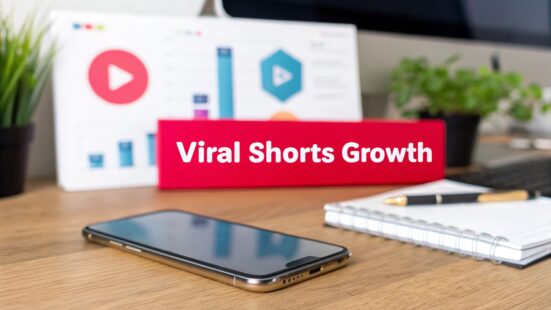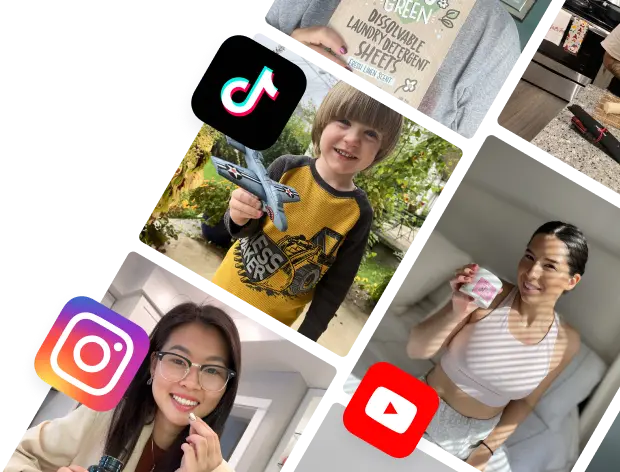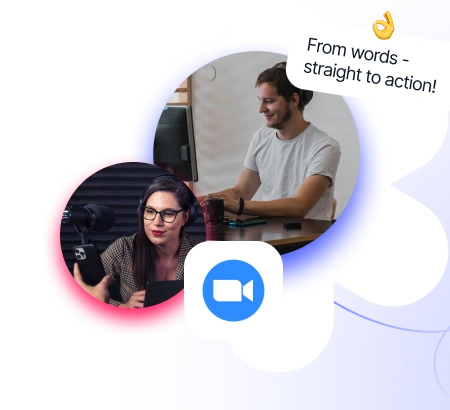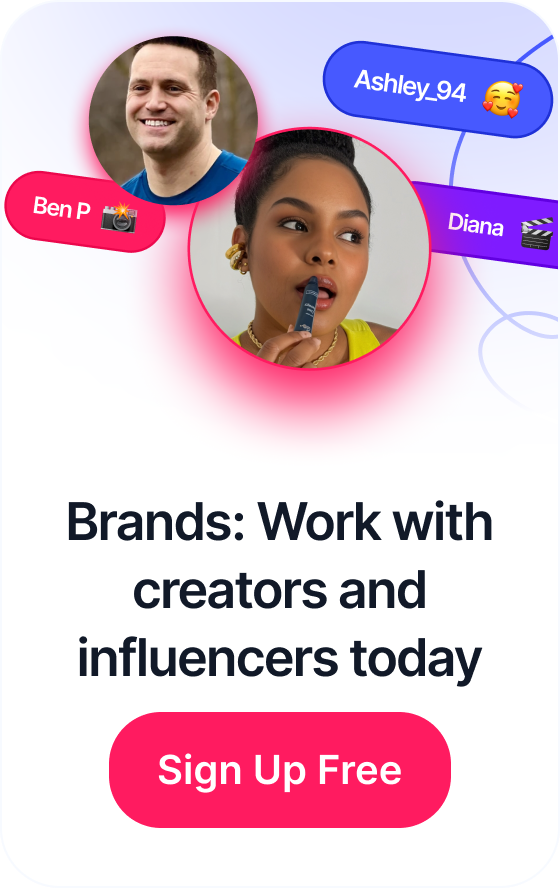 How to Calculate Impressions A Practical Guide
How to Calculate Impressions A Practical Guide
YouTube Shorts have exploded, creating a massive opportunity for creators and brands to reach new audiences with snackable, high-impact content. But with millions of videos uploaded daily, simply creating a Short isn't enough to guarantee success. The platform's algorithm and viewer behavior demand a specific, strategic approach. The difference between a few hundred views and a few million often comes down to mastering repeatable techniques that captivate audiences instantly.
This guide moves beyond generic advice to provide a definitive roadmap, outlining seven essential YouTube Shorts best practices that top creators and brands use to dominate the platform. We will break down the critical elements that drive both reach and engagement, transforming your content from just another video into a powerful growth tool.
From crafting an irresistible opening hook that stops the scroll to mastering the subtleties of audio trends and consistent scheduling, these actionable insights will equip you to create Shorts that not only get seen but get shared, loved, and remembered. You will learn precisely how to optimize every aspect of your short-form video strategy for maximum impact, ensuring your content connects with your target audience and fuels channel growth.
Table of Contents
1. Hook Viewers in the First 3 Seconds
In the fast-paced world of short-form video, you don't have a minute to capture attention; you have less than three seconds. The initial moments of a YouTube Short are the most critical real estate you own. This is where viewers decide whether to stay or swipe away. A strong, immediate hook is not just a suggestion, it's a fundamental requirement for success on the platform and a core component of any effective YouTube Shorts best practices strategy.
The YouTube algorithm prioritizes content that holds viewer attention. A high audience retention rate, especially in the first few seconds, signals to YouTube that your video is engaging. This increases its likelihood of being pushed to a wider audience on the Shorts shelf. The goal is to create an "information gap" or a "curiosity loop" that compels the viewer to see what happens next.
How to Implement an Effective Hook
Mastering the hook is about being direct and creating immediate intrigue. Forget lengthy introductions or branding sequences. Instead, jump straight into the most compelling part of your content. This principle of creating an instant connection is a powerful tool for retention, and you can see more strategies on how to boost views on platforms like TikTok which share similar audience behavior.
Here are actionable ways to craft an irresistible opening:
- Start Mid-Action: Don't waste time with a "hello" or "welcome." Begin your Short in the middle of the most exciting action. A cooking video might start with a dramatic knife chop or a satisfying cheese pull, not a shot of raw ingredients.
- Pose an Intriguing Question: Kick off with a question that your target audience wants answered. For example, a finance creator could start with, "Are you making this common investing mistake?"
- Show the Final Result First: Known as the "payoff preview," this technique is highly effective. A DIY channel can show the stunning final project for two seconds before cutting to the "how-to" process. This promises value and makes the viewer want to see how you got there.
- Make a Bold or Surprising Claim: Use on-screen text or a voiceover to make a statement that grabs attention. A creator like MrBeast excels at this, often starting with a high-stakes challenge like, "I'm giving away $100,000 to the last person to leave this circle."
2. Optimize for Mobile-First Vertical Format
YouTube Shorts are consumed almost exclusively on mobile devices, making a mobile-first, vertical format non-negotiable. Unlike traditional widescreen YouTube videos, Shorts demand content specifically designed for the 9:16 aspect ratio. Treating this format as an afterthought by simply cropping a horizontal video will result in a suboptimal viewing experience, causing viewers to swipe away instantly. Adhering to this vertical-native approach is a crucial part of any successful YouTube Shorts best practices strategy.

The YouTube algorithm recognizes and favors content that is natively formatted for the Shorts player. A video that fills the screen, is easy to watch, and is visually compelling in a portrait orientation will naturally achieve higher engagement and retention. This signals to YouTube that your content provides a positive user experience, increasing its chances of being distributed widely across the Shorts shelf. This principle is why creators who mastered vertical video on platforms like TikTok and Instagram Reels often find a smoother transition to Shorts success.
How to Implement a Vertical-First Strategy
Optimizing for vertical video is about more than just filming in portrait mode; it’s about composing every element of your video for a tall, narrow canvas. Every visual and piece of text must be intentionally placed to maximize impact on a phone screen.
Here are actionable ways to optimize for the vertical format:
- Film Natively Vertical: The simplest and most effective method is to hold your phone vertically while recording. If using a professional camera, mount it sideways to capture a native 9:16 frame, avoiding quality loss from cropping in post-production.
- Keep Action Centralized: The YouTube Shorts interface overlays elements like the channel name, like button, and sound title at the bottom of the screen. Keep all critical visuals, subjects, and action within the central 75% of the frame to ensure they are never obscured.
- Use Large, Legible Text: Text overlays must be bold, high-contrast, and large enough to be read comfortably on a small screen. Test different font sizes and placements to ensure readability without distracting from the main visual content.
- Test on a Real Device: Before publishing, always preview your final video on your own smartphone. This is the only way to accurately see how it will appear to your audience and catch any formatting issues, such as text being cut off or key visuals being hidden by the UI.
3. Create Loops and Rewatchable Content
One of the most powerful and often overlooked YouTube Shorts best practices is designing content that viewers watch more than once. The algorithm heavily favors videos with high Average View Duration (AVD) and Audience Retention. A looped or rewatchable Short can push your AVD well over 100%, sending a strong signal to YouTube that your content is highly engaging and worth promoting to a wider audience.

This strategy works by either creating a seamless transition from the end of the video back to the beginning or by packing so much value and detail into the short timeframe that viewers feel compelled to watch it again to catch everything. Creators like Zach King have built entire channels on this principle, where the "magic" is so quick and clever that you have to rewatch it to figure out how it was done.
How to Implement Loops and Rewatchability
The key to a successful loop is intentional planning from the start. You must think about how the video will end before you even film the beginning. For businesses, this can be particularly effective in product demonstrations; for instance, you can check out these tips for creating high-quality product videos that can be adapted for a looping format.
Here are actionable techniques to make your Shorts rewatchable:
- Plan a Seamless Transition: Film the ending shot of your video first, then film your opening shot to match it perfectly. This could be through consistent camera positioning, matching audio cues, or having an object leave the frame on one side and re-enter from the same side.
- Use the "Perfect Cut" Technique: A popular method is to cut the video on a moment of motion, like a hand swipe across the camera lens or a quick pan. The motion hides the edit point, making the transition back to the start feel invisible and natural.
- Embed "Easter Eggs": Include small, interesting details in the background or within the action that aren't immediately obvious. Viewers who notice them are more likely to rewatch to confirm what they saw or look for other hidden elements.
- Create "Oddly Satisfying" Content: Videos that show a process with a clean, perfect, or satisfying outcome often get rewatched. Think of pressure washing, paint mixing, or precise calligraphy. The inherent satisfaction makes people want to experience it again.
4. Use Trending Music and Audio
In the world of YouTube Shorts, audio is more than just background noise; it's a powerful tool for discovery and engagement. Leveraging trending music and sounds can significantly increase your video's visibility, as the algorithm often pushes content that features popular audio to a wider audience. This tactic taps into existing cultural moments, making your content feel more relevant and shareable, which is a cornerstone of any effective YouTube Shorts best practices framework.

When viewers hear a familiar, trending song or sound effect, it creates an instant connection. This familiarity can stop them from swiping and encourage them to watch, like, and even create their own version of the trend using the same audio. For brands, this offers a direct path to participating in viral conversations and reaching audiences who are actively seeking content related to that trend. To ensure you're using audio effectively and avoid common pitfalls, it’s beneficial to learn more from a creator's guide to adding music to YouTube videos without copyright claims to stay compliant with platform rules.
How to Implement Trending Audio Effectively
The key to using trending audio is to integrate it naturally with your content, not just tack it on as an afterthought. The audio should complement and enhance your visual narrative, whether it's for a comedy sketch, a product demonstration, or a tutorial.
Here are actionable ways to incorporate popular sounds:
- Monitor the YouTube Audio Library: Regularly check the "Trending" section within the Shorts audio picker. This is your direct source for what's currently popular on the platform and what the algorithm is likely to favor.
- Align Audio Energy with Visuals: Match the tempo and mood of the audio to the pace of your video. A high-energy dance track works perfectly for a quick-cut transformation video, while a more relaxed, trending lo-fi beat might be better for a calming "day in the life" segment.
- Participate in Audio-Based Trends: Go beyond just using music. Many trends are built around specific soundbites or audio clips. Recreate these trends with your own brand's unique spin, such as a lip-sync challenge related to your industry or a product reveal synced to a popular beat drop.
- Balance Audio Levels: If your Short includes a voiceover or important spoken dialogue, ensure the music doesn't overpower it. Adjust the volume of the trending track so it serves as an enhancement, not a distraction, allowing your primary message to be heard clearly.
5. Optimize Thumbnails and Titles for Discovery
While YouTube automatically selects a frame from your Short to serve as its thumbnail, you don't lose all control. Strategic optimization of your video's visuals and its title is a critical practice for maximizing discoverability. This ensures your content is not just engaging when watched, but also compelling enough to be clicked on in search results, on channel pages, and in suggested feeds where a title and thumbnail are still crucial.
The algorithm considers click-through rate (CTR) alongside watch time. A strong title and visually appealing thumbnail improve CTR, signaling to YouTube that your content is relevant and interesting to users searching for specific topics. This is a key part of a holistic YouTube Shorts best practices strategy, bridging the gap between passive discovery in the Shorts feed and active discovery through search and browsing.
How to Implement Effective Optimization
The core principle is to treat every frame of your video as a potential thumbnail and every title as a powerful discovery tool. You are essentially creating a video that is "thumbnail-ready" at any given second. This foresight ensures that no matter which frame YouTube selects, it will be visually strong and enticing.
Here are actionable ways to optimize your thumbnails and titles:
- Design Every Frame as a Thumbnail: Ensure your video is filled with visually clean, high-contrast, and compelling shots. A cooking channel, for instance, should make sure every frame showcases appealing food, not just a blurry shot of a mixing bowl. This "always-on" visual quality is paramount.
- Craft Keyword-Rich, Concise Titles: Your title is a primary discovery lever. Include relevant keywords that your target audience is searching for, but keep it short and punchy to avoid truncation on mobile screens. A title like "30-Sec Spicy Noodle Hack" is more effective than "How to Make a Really Delicious and Quick Spicy Noodle Recipe at Home."
- Show the "What" and "Why" Visually: For tutorials or DIY content, ensure the subject is clearly visible and well-lit throughout. The visual should instantly communicate the video's topic. For entertainment Shorts, constant expressive reactions or clear on-screen action ensure any chosen frame is dynamic and engaging.
- Leverage On-Screen Text Strategically: Add bold, easy-to-read text overlays within your video that summarize the core value proposition. A frame featuring text like "This Trick Saves HOURS" can make for an incredibly effective auto-generated thumbnail that grabs immediate attention.
6. Strategic Use of Hashtags and Descriptions
While the visual content of your Short is paramount, the text that accompanies it plays a crucial role in discovery and categorization. Properly utilizing hashtags and video descriptions helps YouTube's algorithm understand your content's context, making it easier to serve to the right viewers. This text-based optimization is a foundational element of any comprehensive YouTube Shorts best practices strategy, acting as a signpost for both the algorithm and potential audiences.
The YouTube algorithm analyzes metadata, including your title, description, and hashtags, to determine a video's topic and relevance. A well-optimized description and strategic hashtag selection can significantly improve your Short's chances of appearing in search results and being recommended alongside similar content. It bridges the gap between your creation and the audience actively looking for it, enhancing discoverability beyond the Shorts feed.
How to Implement Hashtags and Descriptions Effectively
The key is to be strategic and relevant, not to stuff keywords. Your goal is to provide clear, concise context that adds value. Think of the description as a brief explainer and hashtags as category labels that help YouTube place your video in the correct digital aisle.
Here are actionable ways to optimize your hashtags and descriptions:
- Always Include #Shorts: This is non-negotiable. While YouTube automatically identifies most vertical videos under 60 seconds as Shorts, explicitly adding the
#Shortstag (either in the title or description) is a best practice to ensure it's correctly categorized and considered for the Shorts shelf. - Use a Mix of Hashtag Types: Don't rely on just one type of tag. Combine broad, popular tags (like
#Fitness) with niche-specific ones (#KettlebellWorkout) and branded tags (#YourBrandChallenge). This multi-layered approach captures both high-volume search traffic and highly-targeted viewers. A good rule of thumb is 3-5 highly relevant hashtags. - Write Keyword-Rich Descriptions: Your description is an opportunity to expand on the title and provide more context. Briefly describe what the video is about using relevant keywords your target audience might search for. For example, a Short showing a recipe could have a description like: "Quick and easy 15-minute pasta recipe perfect for a weeknight dinner. Find the full ingredient list here."
- Provide Value in the Description: Use the description to offer additional information or a call to action. You can link to a related long-form video, a product page, or a blog post. This turns viewers into engaged community members or potential customers.
7. Consistent Posting Schedule and Frequency
Consistency is the heartbeat of a thriving YouTube channel, and this principle is amplified in the fast-moving world of Shorts. Establishing a regular posting schedule is not just about keeping your audience engaged; it's about signaling to the YouTube algorithm that your channel is an active and reliable source of content. A predictable rhythm helps build anticipation and transforms casual viewers into loyal subscribers who know when to expect new videos from you. This is a crucial element of any long-term YouTube Shorts best practices strategy.
The algorithm favors channels that consistently provide fresh content. Each Short you upload is another opportunity to be featured on the Shorts shelf, another data point for YouTube to understand your audience, and another chance to go viral. Maintaining a steady flow of content keeps your channel top-of-mind for both viewers and the algorithm, preventing your momentum from stalling and ensuring you remain visible in an increasingly crowded space.
How to Implement a Consistent Posting Strategy
Building a sustainable schedule involves understanding your audience's habits and your own content creation capacity. The goal is to find a frequency that you can maintain without sacrificing quality. This approach to content cadence is vital on many short-form platforms, and you can see how the principles apply by learning more about how often you should post on TikTok.
Here are actionable ways to establish and maintain a consistent schedule:
- Analyze Your Audience's Peak Times: Dive into your YouTube Analytics. Go to the "Audience" tab to find the "When your viewers are on YouTube" report. This chart shows the days and hours your audience is most active. Schedule your Shorts to go live just before or during these peak windows to maximize initial viewership.
- Batch Create Your Content: Instead of creating one Short from start to finish each day, dedicate a block of time to film and edit multiple Shorts at once. This "batching" method is highly efficient, ensuring you have a backlog of content ready to go, which prevents gaps in your upload schedule.
- Start Manageably and Scale Up: Don't commit to posting three times a day if you can't sustain it. It’s better to post consistently three times a week than to post daily for one week and then burn out. Start with a manageable frequency, prove you can maintain it, and then gradually increase your output as you streamline your workflow.
- Use YouTube's Scheduling Tool: You don't need to be online to post at the perfect time. Upload your finished Shorts and use YouTube’s native scheduling feature to set them to publish automatically during your audience's peak activity hours. This ensures consistency even when you're busy.
YouTube Shorts Best Practices Comparison
| Strategy | Implementation Complexity 🔄 | Resource Requirements ⚡ | Expected Outcomes 📊 | Ideal Use Cases 💡 | Key Advantages ⭐ |
|---|---|---|---|---|---|
| Hook Viewers in the First 3 Seconds | Medium – requires planning & scripting | Moderate – creative scripting & editing | High – boosts watch time, retention, and algorithm promotion | All Shorts aiming for immediate engagement | Strong initial impression, reduces scroll-away |
| Optimize for Mobile-First Vertical Format | Medium – specific filming setup | Moderate – vertical filming equipment | High – native mobile experience, professional look | Mobile-centric video content | Better engagement on mobile, optimized visuals |
| Create Loops and Rewatchable Content | High – technically challenging | High – complex editing & multiple takes | Very High – dramatically increases watch time & engagement | Content benefiting from repeat views & visual effects | Extends watch time naturally, improves rankings |
| Use Trending Music and Audio | Low to Medium – audio selection & syncing | Low – access to audio libraries | High – increased discoverability & emotional connection | Music-driven, entertainment, and trend-focused Shorts | Boost via trending sounds, higher engagement |
| Optimize Thumbnails and Titles for Discovery | Medium – consistent visual quality & SEO | Low to Moderate – keyword research & editing | Moderate – better click-through and discoverability | Creators emphasizing search and suggested results | Higher CTR, improved brand presentation |
| Strategic Use of Hashtags and Descriptions | Low – research and tagging | Low – hashtag and description writing | Moderate – improved reach and searchability | Channels seeking discoverability and algorithm understanding | Better content categorization and audience reach |
| Consistent Posting Schedule and Frequency | Medium – content planning & scheduling | Moderate – content creation & scheduling tools | High – builds audience loyalty and algorithm favor | Channels aiming for steady growth and visibility | Increased channel visibility and audience retention |
From Practice to Performance: Your Blueprint for Shorts Success
The landscape of short-form video is defined by rapid iteration and relentless competition, but mastering it is not a matter of chance. The seven pillars we've explored provide a repeatable framework for success. From seizing attention in the crucial first three seconds to optimizing for the vertical, mobile-first experience, each practice is a critical component in a much larger strategic engine. Think of these not as a simple checklist, but as interconnected gears. A compelling hook is amplified by a seamless loop; trending audio is made more powerful by a consistent posting schedule.
The true value of these YouTube Shorts best practices lies in their synergy. When you combine a powerful, algorithm-friendly title with strategic hashtags and a rewatchable content loop, you send strong signals to both viewers and the YouTube discovery system. This comprehensive approach is what separates fleeting viral moments from sustainable channel growth. Your goal is to move beyond simply creating content and start architecting experiences that are designed for discovery, engagement, and retention from the very beginning.
Your Actionable Next Steps
To turn these insights into tangible results, avoid the trap of trying to implement everything at once. Instead, adopt a focused, iterative approach:
- Select & Implement: Choose two or three practices to prioritize for your next five to ten Shorts. For example, you might focus intensely on perfecting your initial hook and experimenting with trending audio.
- Analyze & Measure: Dive into your YouTube Studio analytics. Look for clear patterns. Did Shorts with specific audio trends see a higher view-through rate? Did a particular style of thumbnail lead to more impressions?
- Refine & Repeat: Based on your data, refine your approach. Double down on what works and discard what doesn't. Then, select another practice from the list to integrate and test.
This cycle of implementation, analysis, and refinement is the core of a successful Shorts strategy. To effectively implement these strategies and streamline your production workflow, consider exploring the best apps for content creators, which can help you edit videos, design thumbnails, and manage your content more efficiently. By consistently applying and testing these expert-level strategies, you transform your channel from a passive content library into a dynamic engine for audience growth, community building, and ultimately, brand impact.
Ready to scale your content creation and collaborate with talented creators who already know how to implement these best practices? JoinBrands connects you with a marketplace of verified influencers and user-generated content creators ready to bring your brand's Shorts strategy to life. Find the perfect partners to create authentic, high-performing content by exploring the platform at JoinBrands.








